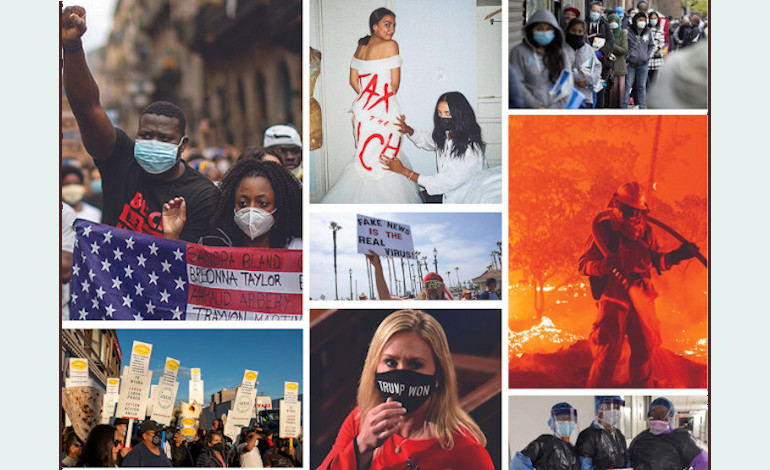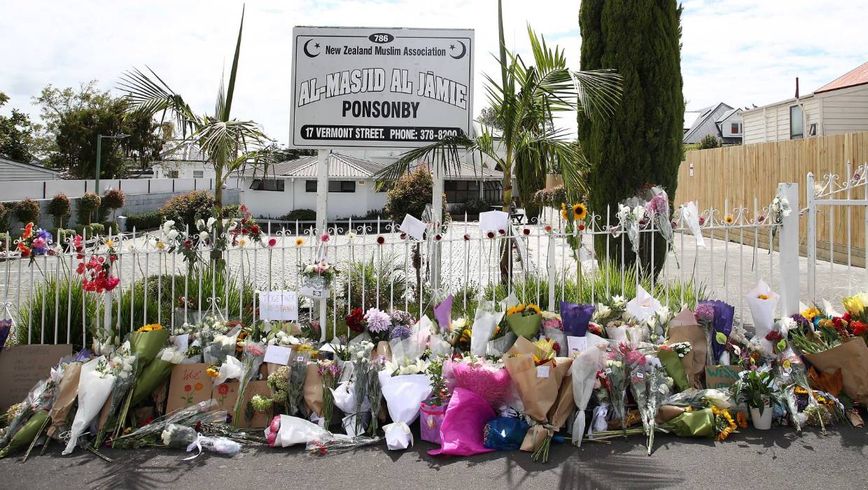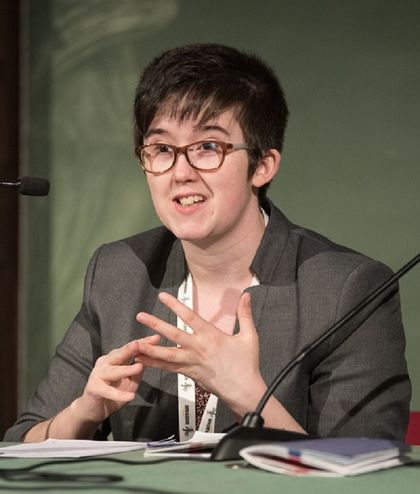Grace Fors is a member of Socialist Alternative in the US.
Is it possible to win a better future? The answer to that question is an unequivocal yes, but only if we fight for it.
Today’s generation is growing up surrounded by crises. As they come of age, dead-end jobs, crushing debt, and climate destruction await them. After 18 months of isolation, the COVID-19 pandemic is rearing its head again with no clear end in sight. All of these combined disasters can create a perfect storm for demoralization, and millions of people are no doubt wondering if it’s possible to win a better future. The answer to that question is an unequivocal yes, but only if we fight for it.
How Did We Get Here?
Under capitalism, society is divided into two general classes: the capitalist ruling class and the working class. The former, consisting of the bosses, CEOs, executives, and the ultra-rich, are solely concerned with maximizing profits. Their concerns are how to cut costs, where to drill for oil, what laws to lobby for that will be most favorable to their interests, and fundamentally, where to invest capital to get the greatest return?
On the other hand, the working class, who actually keep society running, are the legions of people who survive on our wages from work, and the questions we grapple with are quite different. How do I budget my paycheck to make sure I can afford my bills this month? What will I do if my rent goes up? Do I need to take a second job to put food on the table?
The relationship between the working class and the ruling class under capitalism is one of cynical mutual necessity. To produce goods and services, capitalists need to employ workers. However, if they want to turn a profit, they need to pay wages lower than the value the worker produces. Meanwhile, working-class people need to work for a wage to afford our needs like food and shelter, which only become further out of reach as the capitalists, big companies, banks, and landlords strive to raise the prices of the things we need to survive (all while paying us less).
This tension between worker and boss which colors daily life for ordinary people is then paired with the numerous consequences of capitalist rule in society: fossil fuel-driven climate catastrophe, oppression, and economic crises. In this way, not only is the relationship between worker and boss exploitative but between capitalism and all of broader society.
According to Marx and Engels’ theory of historical materialism, throughout history, class divisions denoting oppressors and oppressed have emerged from economic relations. Wherever there have been opposed classes, they have clashed, and these clashes are the motor force of historical developments. At certain points, the uninterrupted fights between hostile classes reach their breaking points, and a fundamental reordering of social, political, and economic relations is made possible only through revolution.
“The history of all hitherto existing society is the history of class struggles.” Karl Marx, The Communist Manifesto
Class struggle has been on the scene since the very beginning of capitalism. It is an inescapable reality. The ruling class carries out a class struggle every day as they maintain their control over the functioning of society. However, the working class can also wage a struggle in its own interests. In fact, the working class fighting back as a united class is the only proven method to win victories.
From the 1830s onwards, slave rebellions battled plantation profiteers laying the basis for the determined fight against capitalism and racism that is still being waged today, nearly two centuries later. In the New England textile mills, teenage girls working tirelessly in the factories using dangerous equipment started taking defiant strike action against unsafe conditions and wage cuts that resulted in the first predecessors to modern labor unions.
Throughout the development of industrial capitalism in the US, struggles such as these reached titanic heights. In the 1880s a mighty labor movement spearheaded fights for the 8-hour workday and weekends, through daring strike action and mass revolts. In some cases, they took over entire cities. In the 1930s the Communist Party led victorious struggles for unemployment benefits and against evictions. A tremendous wave of unionization, mass strikes, and organizing campaigns forced the passage of key New Deal provisions like the National Labor Relations Act and Social Security.
In 1934, Minneapolis truck drivers with Teamsters Local 574, led by socialists, waged a mass strike that evolved into a ferocious class battle. Truck drivers and socialist leaders mobilized all workers, and the entire community, in the struggle. Following three months of escalating tactics, they won the union’s right to represent all workers in the industry, defeated the “open shop” status quo in Minneapolis, and sparked organization in the trucking industry throughout the country. Teamster membership nationwide quintupled over the next 5 years. Furthermore, this 1934 strike was among the monumental breakthroughs in the 1930s that ushered in a new militant workers movement post-Depression, simply by demonstrating to the rest of the world what is possible through class struggle.
We have even recent examples of what working class struggle can win. In February 2018, thousands of West Virginia teachers and school staff walked off the job. Against the advice of the law and even of their union leadership, the teachers were confident that they could shut down the school system statewide. Protests of thousands of teachers, parents, students, and community members swarmed the state capitol every day and did not rest until their demands were met in full, and ultimately they were when the Republican legislature was forced to grant a 5% pay increase for all public sector workers. The power of the working class is the power of determined collective action.
“If the workers are organized, all they have to do is put their hands in their pockets and they have got the capitalist class whipped.” ‘Big Bill’ Haywood, Industrial Workers of the World (IWW) leader
Working class struggle gets results. It’s the key to winning victories for the vast majority of society, and as Marx points out, is the motor force of historical progress. The organized combative tactics of working people are the key to winning our basic needs, as well as social liberation and environmental justice.
Is class struggle a thing of the past?
It can be hard to imagine the titanic class struggles of the past – with mass meetings in the hundreds, militant picket lines, general strikes – taking place in today’s context. The reason for this is intentional.
When the capitalist class began its turn to neoliberalism at the end of the 1970s, this began a long and intense period of warfare waged against working people and our organizations. This not only helped the ruling class restore profitability to its declining system but concealed the monumental history of working class struggle which, if revived, could spell their ruin.
This “class warfare from above” was successful and we are still dealing with its consequences today. However, the 2008–09 financial crisis shook the foundations of the neoliberal world order. Suddenly, the will of the working class asserted itself again. Wall Street bailouts ignited the Occupy Wall Street movement. Wisconsin Republican Governor Scott Walker’s vicious public sector cuts sparked a month-long uprising and occupation of the state Capitol in the Battle of Wisconsin. And worldwide, rebellions and revolutions shook the ruling class. While these movements did not produce the revolutionary victories we need, they were precursors to breakthroughs like Kshama Sawant’s 2013 election, Bernie Sanders’ 2016 and 2020 presidential runs, the #RedforEd teachers strikes, and the growth of socialist organizations like the Democratic Socialists of America. Now, the experience of the pandemic has, for many, decisively shattered the illusion that capitalism is a viable system.
More and more, the profound underlying crisis facing the political establishment is making itself known. Millions have been exposed to the naked scam underlying our economic system. After a long period of retreat, working people are poised to return to the scene. However, the main obstacle to the development of a real fightback is the historically low level of working class organization. Building a fightback on the scale necessary will require the development of a reinvigorated, militant labor movement as well as the establishment of a working class political party free from corporate control.
Winning Anything Will Require Class Struggle
The stakes are enormously high for humanity right now. The IPCC warns the earth has warmed 1.1 degrees Celsius since the Industrial Revolution.
Even the Democrats’ boldest proposals come nowhere near what is necessary to reverse the climate spiral. Limiting our ambitions to what the political establishment, with its two parties of big business, finds acceptable is a nonstarter.
There is no path to 100% renewable energy without workers and youth as the driving force. This must include workers in polluting industries. So long as these workers are the source of fossil fuel profits, a strong labor movement with workers organized around a common strategy for renewable jobs and a just transition, joining forces with the tremendous youth climate movement, could be unstoppable against the menace of the fossil fuel industry.
There is strong historic precedent for the working class acting on behalf of the planet. For example, the “antismoke crusades” of the early 20th century, many led by ordinary mothers who held anti-smog marches against polluting factories. The United Steelworkers took on Carnegie Steel in the aftermath of the deadly Donora Smog of 1948 killing dozens. Organized labor was a key proponent of environmental protection laws in the 1960s and 70s. Labor movements at their most powerful have taken up struggles for the environment.
We need to organize ourselves, in unions to fight in our workplaces, and in our own political party to fight as working people against the capitalist class as a whole. This is the only solution to the climate crisis, and the same applies for anything else we could ever hope to win.
The capitalist class has no intention of acting outside of its own interests. They’re not inclined to let their bought-off politicians raise taxes on their profits. Cutting police budgets to fund community services would weaken their go-to institution they mobilize to protect their property, break strikes, and brutalize protest. They will not tolerate guaranteed housing, healthcare, and living wages because working people’s financial struggles are the bosses’ primary way of coercing us into low-paid, exploitative jobs.
We only have two options: we can leave society in their hands, or we can harness the inherent power of our class to seize what is rightfully ours.
History shows us the only rights we have as workers aren’t those granted by the state or the constitution, but the ones workers and mass movements take for ourselves and fight to defend. Organized mass movements holding protests, town halls, direct action, and leveraging strike action through escalating tactics.
This World Isn’t Ours, But It Could Be
The level of wealth being hoarded by the rich is at historic levels, and the capitalist system is completely failing to provide an answer to the existential crises we’re facing today – whether it be economic crises, a deadly pandemic, or a worsening climate disaster caused by the fossil fuel industry.
There is an understandable lack of confidence among many today in what a mass movement could achieve, but this mood could not be further from reality.
We can look to the actions of the capitalists themselves to see just how great a threat working class organization is to their rule. Why do capitalists spend millions on crushing strikes? Why does Amazon invest in developing heat maps to track where Whole Foods workers might attempt to unionize? Why do they sink millions in campaign donations to ensure business-friendly politicians are elected? Why are bourgeois commentators in the Financial Times and the Bezos-owned Washington Post suddenly arguing in favor of “equitable distribution?” Because when push comes to shove, short-term profit is not the only thing driving capitalists. They’re also invested in the survival of their system.
Working people can leverage our role in creating all the profits to force concessions from the bosses. Even without revolutionary change, there’s a lot that can be won. If healthcare workers went on strike for Medicare for All and were supported by mass demonstrations and direct action, we could force it onto the agenda. If youth climate strikers linked up with workers in polluting industries to demand green jobs, we could win certain meaningful climate protections. The main thing standing in the way of these forces cohering is the lack of militant working class leadership, something socialists need to fight ferociously to organize.
As long as capitalism exists, the balance of power will tilt in favor of the wealthy elite with working people and the poor in the crosshairs. Our movements will come up against all sorts of obstacles put in place by the ruling elite. They will continue to try and divide, repress, and co-opt our movements because of the existential threat they pose to the rule of the billionaires. It’s for these reasons that socialist strategy and politics need to guide the broader class struggle in order to not just wrest gains from the bosses but to ultimately overthrow and replace their rigged system.
The working class of Seattle ran the city for 5 days in the 1919 General Strike, briefly seeing and feeling what it would mean for working people to truly run society. The inspiration for this came from the 1917 Russian Revolution, demonstrating how revolutionary ideas can elevate class struggle to unimaginable heights.
The role of socialists in the broader class struggle is to push it closer and closer to revolutionary conclusions. This means not just fighting for the most basic demands of the movement, but broadening them out and seeking to draw the widest sections of the working class into the struggle. It also means drawing out crystal clear lessons from past victories and defeats in the workers’ movement.
The struggles of the past, even where they were defeated or their victories reversed, were not for nothing. There are lessons that, if applied today, will be instrumental in clearing the path forward. One victory can reverberate and unleash a wellspring of latent potential. Understanding this is the key to overcoming the very real fear that things simply cannot get better.




